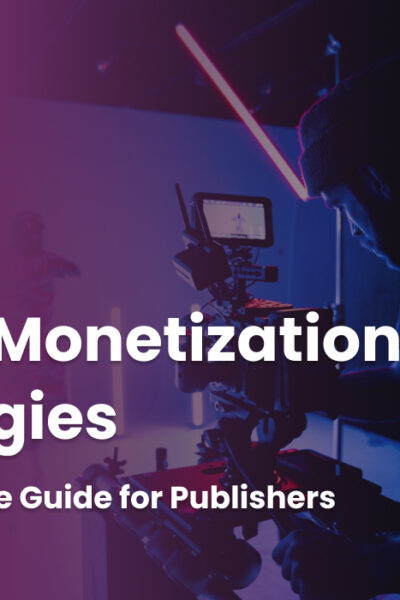Publishing brands rebounded from the Covid decline last year on the back of strong digital revenues and dealt the “infodemic”, as audiences showed signs of burnout with the news agenda.
The hastened decline of print saw publishers accelerate their digital transformations and investment in new subscription models. They also continued to rebuild trust in an increasingly polarised society, bucking the trend faced by so many other sectors of industry, commerce and politics as audience confidence in the media as a source of reliable and accurate information grew.
A stand-out trend in 2021, however, must be the rise of social video.
The growing popularity of user-generated video on social platforms such as TikTok, Instagram Reels, YouTube and Facebook Watch prompted a greater number of publishers to beef up their video offering. And it’s anticipated that video will drive 65% of digital publishing in 2022.
So, how will digital publishing evolve in 2022? What are the key trends publishers need to be aware of, and what role will video play in publishing success?
Here are my top five predictions:
More Diverse Content
Publishers are increasingly recognising they must reflect racial and ethnic diversity both in their editorial structure and by producing content that is relevant to and reaches every community and individual.
In an era defined by climate change and marked by the rise of movements such as Black Lives Matter, LGBTQ+ and MeToo, it has never been more important for publishers to offer accessible and inclusive content. Content that not only informs, educates, and entertains but also represents all parts of society and the issues audiences care most about.
Audience growth trends at user-generated news platforms like Blavity and Outlier demonstrate that audiences want content that reflects their experiences and perspectives.
User-generated video (UGV) is a vehicle that can drive up diversity representation. UGV allows publishers to show the world the stories that are shaping society beyond the mainstream cameras and from a myriad of perspectives. Publishers that don’t invest in diversity will find audiences questioning their authenticity. Bringing me nicely to my next prediction…
More Trustworthy News Delivery
The world has woken up once again to the value of trusted, independent journalism as both a product and a service. Trust in the news has grown by 6% in the wake of Covid. But trust can be quickly eroded.
Publishers must invest in how they gather, verify and deliver the news; they must offer impartial and unbiased reporting, they must reveal truths, and shine a light in dark corners.
UGV offers the opportunity to deliver stories grounded in a moment. It allows publishers to not only report a story, but to show the actual moment the story took place; to chronologically plot events and offer greater context and understanding.
This media plays an important role in the verification of the facts that support a story, adding a further level of credibility. It also provides the speed and access needed to tell stories in real time.
UGV will become an accelerant for truth in 2022. A powerful storytelling tool for publishers, bringing audiences closer and fostering a deeper understanding of shared struggles, as well as greater context and comprehension to reporting.
More Curation of Content
Curation is becoming as important to publishers as content creation itself. Curation is increasingly the best way for publishers to capture and share must-read stories and interesting content. This is particularly important for attracting and — even more importantly — retaining Gen Z and Gen Alpha audiences.
When it comes to keeping eyeballs for longer and building a stronger audience connection, it’s all about interest through intelligent curation. Think TikTok Playlists, offering the ability to group collections of short-form video clips into themed collections to keep viewers checked in for longer.
But it’s about so much more than just retaining attention, it’s about building need and brand loyalty. Publishers that can tap into their audiences and understand their story needs, can curate content for them to quickly and easily digest, building a desire around that editorial curation that grows loyalty.
It is no coincidence that the publishers who are seeing growth in digital subscriptions, have developed the strongest understanding of their audiences and curated content to feed their demand.
More Data-Driven Content Experiences
First-party data will become key to publishing success as the eventual demise of third-party cookies looms large. But data is not all about maximising traffic and revenue, it’s about meeting higher audience expectations for more meaningful interactions and more immersive experiences.
Publishers must take data a step further in 2022 and use it not only to target subscription and ad revenue. It’s not just about raw data, it’s about actionable insights that can be used to capture and retain eyeballs. They need to look at dwell time, number of shares, number of comments, and audience demographics.
Then they must use that intelligence to build a stream of content — including video — that works harder in terms of engagement, takes every user on a journey to retain their interest for longer and exceeds expectations. In return, audiences will be willing to give them the first-party data they need to attract ad spend and subscriptions.
More local, community-based content
One of the positive impacts of the pandemic was the resurgence of local news. Something highlighted in 2021 by Australia’s attempt to level the playing field and enhance the social publishing opportunity for local journalism — and Facebook’s subsequent retaliation.
In 2022 the local news sector is expected to continue to thrive and become even more competitive, as publishers seek to get closer to the communities they serve. Plans by the BBC to employ 100 more regional news reporters in the UK has come under strong criticism, in a clear indication of the local news battle ground.
Local news publishers realise the digital opportunity, and national publishers are looking to embrace co-operative and community models of news gathering — publishing local stories, or national or viral stories with community significance, for local people — offering greater diversity in their coverage and appealing to new audiences.
Video is the vehicle that will power the local news agenda, and UGV in particular will enable them to act in a more agile way and react quickly to capture and share stories shaping communities.
So, that’s just a few of my musings on the role video will play in publishing in 2022. I am sure there will be more, as user-generated video continues to open up new opportunities for publishers.
Disclaimer: The views, opinions and ideas expressed in this post belong to the author/s and do not necessarily reflect those held by State of Digital Publishing.









